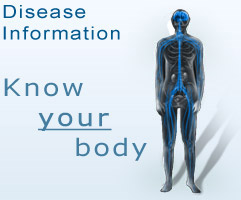Menopause
What is Menopause?
Menopause can be defined as the time in a woman's life when the ovaries are no longer producing eggs and the menstruation has now stopped.
The average age of menopause is between 50 and 51 years, although some women experience menopause early (before age 40).
During the transitional years, often from age 40 until menstrual periods have been absent for 12 months, many women develop menopausal symptoms, including irregular menstrual bleeding, hot flashes, night sweats, and vaginal dryness. A woman is said to be postmenopausal when she has not had a menstrual period for at least 12 months.
Signs and symptoms
The most common symptoms of menopause include hot flashes, night sweats, and vaginal or urinary symptoms. It is important to note that not all women experience these symptoms.
Hot flashes often begin several years before menopause and may continue for several years after menopause. They are more common at night, when they can cause night sweats, which can disrupt sleep. As a result of sleep disruption, many women also experience symptoms such as fatigue, irritability, difficulty concentrating, and mood swings. Oestrogen is the most effective treatment available for hot flashes.
Vaginal and urinary symptoms
During or after menopause, many women begin to experience vaginal dryness or urinary symptoms, such as leakage of urine or urinary tract infections. These problems are related to a decrease in oestrogen levels. Oral oestrogen is not usually recommended for vaginal dryness or urinary symptoms, although vaginal oestrogen (cream or pills) may be beneficial.
Other symptoms
Oestrogen has important effects on many other organs, such as the brain, skin, blood vessels, heart, bone, and breast. Without oestrogen, the bones are at greater risk of developing osteoporosis, which causes the bones to become weakened and increases the risk of fracturing. In addition, the risk of heart disease increases after menopause.
What is hormone replacement therapy?
Hormone replacement therapy (HRT) is the term used to describe the two hormones, oestrogen and progestin, that are given to relieve symptoms of menopause. Oestrogen is the hormone that is most effective in relieving these symptoms. However, women with a uterus must also take progestin to minimize the risk of developing uterine (endometrial) cancer. When oestrogen is taken alone, it stimulates excessive growth of the lining of the uterus (the endometrium). Taking progestin along with oestrogen prevents the endometrium from overgrowing.
Women who do not have a uterus, usually as a result of surgery (hysterectomy) do not need to take progestin, but are given oestrogen alone; this is called oestrogen replacement therapy (ERT).
Types of oestrogen - oestrogen can be taken as a pill (orally), or absorbed through the skin from a patch (transdermal) or lotion/gel (topically), or inserted into the vagina.
Oestrogen pill
There are many types of oestrogen pills. Women with a uterus who take an oestrogen pill must also take a progestin, either in a combination product or separately, to minimize the risk of developing uterine cancer. Pills that include both oestrogen and progestin are available.
Oestrogen patch
There are many brands of oestrogen patches. A combination oestrogen and progestin patch is also available. Some patches need to be replaced every few days, while other are only replaced once a week. Oestrogen patches are as effective as oral oestrogens in increasing bone density and in treating menopausal symptoms. Women with a uterus who use an oestrogen patch must also take a progestin to decrease the risk of uterine cancer
Vaginal oestrogen
Vaginal oestrogen is a good option for women with vaginal dryness or frequent urinary tract infections. Vaginal oestrogen does not have the risks of oral oestrogen and it is not necessary for women with a uterus to take a progestin while using most types of vaginal oestrogen.
Transdermal oestrogen
Transdermal oestrogen products include those that are applied to the skin as a cream, lotion, or spray. The amount of oestrogen (estradiol) provided by each product varies significantly, meaning that these products are not interchangeable. Women with a uterus who use a transdermal oestrogen must also take a progestin to minimize the risk of uterine cancer.
Preliminary evidence indicates that transdermal oestrogen therapy is associated with a lower risk of deep venous thromboembolism (blood clots in the legs) compared to oral oestrogen therapy. This may be due to the fact that oral oestrogens stimulate greater production of clotting factors in the liver because oral oestrogen is absorbed from the stomach and immediately is carried by the circulation into the liver; this is called the ‘first pass effect'.
The rate of stroke is increased in women who take HRT.
The rate of blood clots (in the leg and lung) is increased in women who take HRT. The risk is also increased in women who take oestrogen alone. Therefore, your doctor needs to discuss the available options and risks with you prior to commencing this medication.
Studies have reported HRT use is associated with an increase in breast cancer risk. The major increase in risk occurs after taking HRT for four or five years. There was no increase in the rates of breast cancer in women who took oestrogen alone. This suggests that the progestin component of HRT is an important factor in the risk of developing breast cancer. The degree of increase in breast cancer risk due to oestrogen is often misinterpreted. It is important to understand the absolute risk that a woman will develop breast cancer because she takes oestrogen. A 50-year-old woman who takes oestrogen has a one in 100 chance that she will develop breast cancer over a 10-year period as a result of her use of oestrogen. This estimate would be slightly higher (e.g. 1.5 in 100) for a woman over 65 years.
Endometrial hyperplasia and cancer
Studies have found that postmenopausal women with a uterus who are treated with oestrogen alone have an increased risk of endometrial cancer and hyperplasia (a precursor to cancer). Within one year, 20 to 50 percent of women who have a uterus and take oestrogen alone develop endometrial hyperplasia. Taking progestin along with oestrogen minimises this risk.
Gallbladder disease
There is considerable evidence that taking oestrogen, especially in pill form, increases the risk of gallbladder disease. The risk of requiring a cholecystectomy (removal of the gallbladder) increases the longer a woman uses hormone therapy. The risk decreases substantially within one to three years after a woman discontinues hormone therapy.
Benefits
The risk of osteoporotic fracture is reduced at the hip and spine in women who take HRT and oestrogen alone.
Colorectal cancer
The risk of colorectal cancer is reduced in women who take HRT. This benefit is not seen in women who took oestrogen alone.
Hot flashes
Oestrogen is the most effective treatment available for menopausal symptoms, such as hot flashes.
Quality of life
Women with severe menopausal symptoms often describe a dramatic improvement in their quality of life when they are treated with oestrogen. This is usually due to relief of hot flashes and restoration of normal sleep.
Vaginal dryness and urinary tract infection
Oestrogen can decrease the frequency of urinary tract infections (UTIs) in menopausal women, possibly by increasing the number of "normal" bacteria living in the vagina. Vaginal oestrogen, rather than oral oestrogen, is usually recommended to for women with frequent UTIs.
Vaginal dryness can also be treated with vaginal oestrogen. Other products, such as vaginal lubricants and moisturizers, may also be helpful.
Depression
Oestrogen may improve mood and decrease depression in some menopausal women.
Who should take HRT?
The primary reason to consider hormone therapy is to treat bothersome menopausal symptoms such as hot flashes. Most experts agree that hormone therapy is safe and reasonable for healthy postmenopausal women who need to take it to relieve symptoms. When it is used, is should be taken for the shortest period of time possible.
Short term use of oestrogen does not increase the risk of breast cancer, but endometrial hyperplasia and cancer can occur after as little as six months of unopposed oestrogen therapy; as a result, a progestin is a required element of HRT for women who have not had a hysterectomy.
The goal of hormone therapy is to relieve symptoms, and then to eventually decrease and stop the treatment (unless there is a compelling reason to continue with long-term treatment). One way to do this might be to omit one pill per week. Many women are able to stop hormones without any return in menopausal symptoms.
Long-term therapy
Only a minority of women who are unable to successfully stop oestrogen should continue with long-term therapy. If HRT is required, the lowest dose possible should be used, and the woman is encouraged to try decreasing the dose at a later date. Women who choose to take long-term HRT or ERT should discuss the risks of breast cancer, heart disease, blood clots, strokes, and other potential complications with their healthcare provider on a regular basis.
Oestrogen or combined oestrogen-progestin therapy is not recommended for women with the following:
- Current or past history of breast cancer
- Coronary artery disease
- A previous blood clot or stroke
- Women at high risk for these complications
Women with breast cancer - Women with breast cancer often experience early menopause as a result of their breast cancer treatments, such as chemotherapy. In these women, oestrogen or hormone replacement therapy (by mouth or patch) is not generally recommended due to an increased risk of a recurrence of their breast cancer.
Reference:
1. UpToDate
 TransmedBanner4.jpg)

